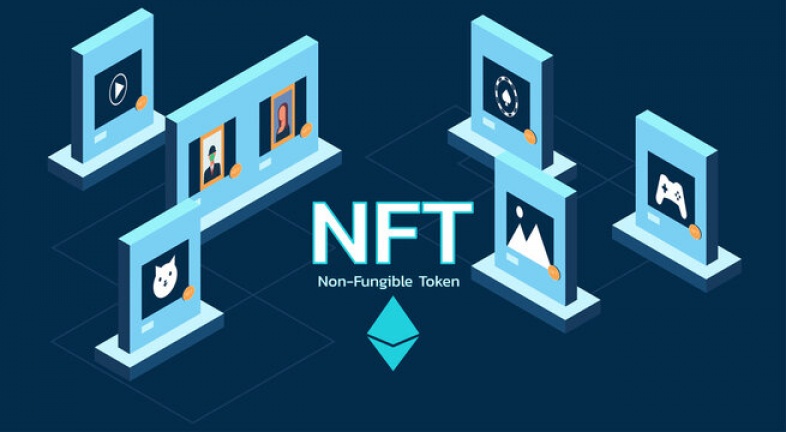Non-Fungible Tokens (NFTs) have taken the digital world by storm, transforming the way we buy, sell, and trade digital assets. As we navigate through 2024, the NFT marketplace landscape continues to evolve rapidly, presenting both challenges and opportunities for developers and entrepreneurs. In this comprehensive guide, we'll delve into the latest trends shaping the NFT marketplace ecosystem and provide insights into how you can navigate this dynamic industry to build a successful platform.
Understanding NFTs:
Before delving into marketplace development, it's essential to grasp the fundamentals of Non-Fungible Tokens. NFTs are unique digital assets stored on a blockchain, each with its distinct value and properties. Unlike cryptocurrencies such as Bitcoin or Ethereum, which are fungible and interchangeable, NFTs represent ownership of a specific item or piece of content, whether it's digital art, music, collectibles, virtual real estate, or even tweets.
The uniqueness and scarcity of NFTs have made them highly sought after by collectors, creators, and investors, driving a surge in demand and valuations. NFTs provide creators with new avenues to monetize their work, while collectors gain ownership of rare and exclusive digital assets.
The Current State of NFT Marketplaces:
The popularity of NFTs has led to the emergence of numerous marketplaces catering to different niches and audiences. Platforms like OpenSea, Rarible, Foundation, and SuperRare have gained traction as go-to destinations for buying, selling, and trading NFTs. Each marketplace offers its unique features, user experience, and community, attracting a diverse range of creators and collectors.
However, despite the proliferation of NFT marketplaces, challenges such as high gas fees, scalability issues, and copyright concerns persist. Moreover, as the market matures, users are demanding more transparency, sustainability, and inclusivity from NFT platforms.
Trends Shaping NFT Marketplace Development in 2024:
To succeed in the competitive landscape of NFT marketplaces, it's crucial to stay ahead of the curve and adapt to emerging trends. Let's explore some of the key trends shaping NFT marketplace development in 2024:
- Sustainability and Environmental Consciousness:
One of the most significant concerns surrounding NFTs is their environmental impact, particularly in terms of energy consumption. The proof-of-work consensus mechanism used by many blockchains, such as Ethereum, requires significant computational resources, leading to a high carbon footprint.
In response to these concerns, developers are exploring alternative solutions, such as proof-of-stake (PoS) blockchains or layer 2 scaling solutions, to reduce energy consumption and make NFTs more sustainable. Additionally, some marketplaces are implementing eco-friendly practices, such as carbon offset programs or environmental initiatives, to mitigate their environmental impact and attract environmentally conscious users.
- Interoperability and Cross-Platform Integration:
As the NFT ecosystem expands, there is a growing demand for interoperability and cross-platform integration, allowing users to seamlessly transfer assets between different marketplaces and platforms. Interoperability enables greater liquidity, diversity, and accessibility within the NFT market, empowering creators and collectors to reach broader audiences and unlock new opportunities.
Developers are exploring technologies such as blockchain bridges, standards like ERC-1155, and cross-chain protocols to enable interoperability and facilitate the exchange of assets across multiple platforms. By embracing interoperability, NFT marketplaces can foster a more interconnected and vibrant ecosystem, driving innovation and collaboration across the industry.
- Gamification and Collectibles:
Gamification has emerged as a powerful trend in NFT marketplace development, blending elements of gaming and collectibles to create engaging and immersive experiences for users. NFT-based games, virtual worlds, and metaverses offer players the opportunity to collect, trade, and interact with digital assets in dynamic and interactive environments.
Marketplaces that embrace gamification can attract a broader audience, including gamers, collectors, and enthusiasts, by offering unique and rewarding experiences. Features such as limited-edition collectibles, gamified challenges, and interactive events can enhance user engagement and retention, driving traffic and transactions on the platform.
- Social and Community Engagement:
Community engagement has always been a cornerstone of successful NFT marketplaces, but in 2024, it's more important than ever. Building a strong and vibrant community around your platform can foster trust, loyalty, and collaboration among users, driving growth and sustainability in the long term.
Marketplaces that prioritize social features, such as messaging, commenting, and social sharing, can facilitate communication and interaction among creators, collectors, and investors. Additionally, community-driven initiatives, such as virtual events, workshops, and collaborations, can cultivate a sense of belonging and ownership among users, strengthening the platform's ecosystem and value proposition.
- Regulation and Compliance:
As the NFT market continues to expand, regulators are paying closer attention to ensure compliance with existing laws and regulations. Marketplaces must navigate a complex and evolving regulatory landscape, addressing issues such as intellectual property rights, securities laws, and anti-money laundering (AML) regulations.
To mitigate legal risks and build trust with users, developers should prioritize compliance and transparency in their marketplace operations. This may involve implementing KYC (Know Your Customer) and AML procedures, establishing clear terms of service and copyright policies, and collaborating with legal experts to ensure compliance with relevant regulations.
Conclusion:
The world of NFT marketplace development is dynamic, fast-paced, and full of opportunities for innovation and growth. By understanding the latest trends shaping the industry, you can position yourself for success and build a platform that resonates with users and stands out in the crowded marketplace landscape. Whether you're exploring sustainability initiatives, embracing gamification, or fostering community engagement, there's no shortage of ways to differentiate your platform and create value for creators, collectors, and investors alike. With careful planning, strategic execution, and a commitment to staying ahead of the curve, you can decode the trends and unlock the full potential of NFT marketplace development in 2024 and beyond.


No comments yet